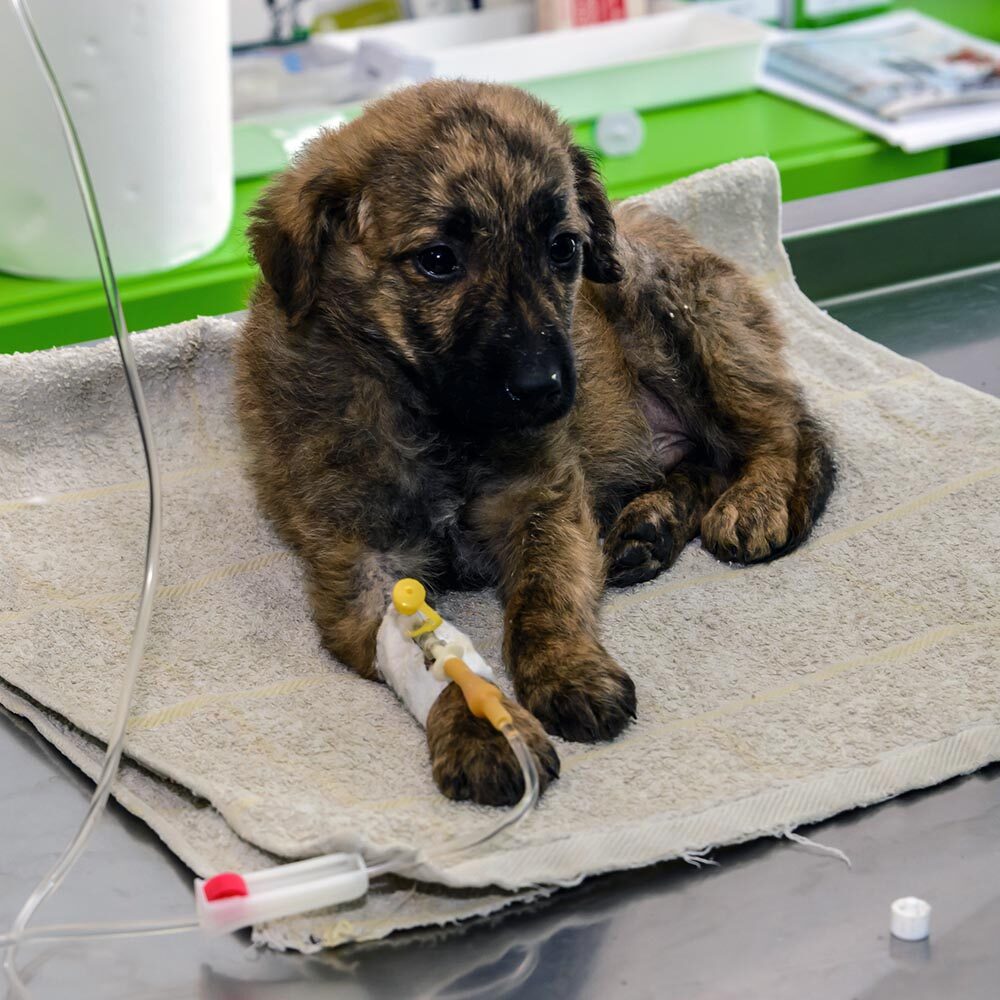What is laparoscopic surgery?
A Laparoscope is a thin tube with a camera and a light that can be inserted into the abdomen through a small incision. The laparoscope acts as the veterinarian’s “eye” providing a close-up view of a pet’s internal organs. Originally, laparoscopy was used mostly as a diagnostic tool to view the internal organs and obtain tissue samples. As in human medicine, the uses for laparoscopy in veterinary medicine have progressed to allow for surgical procedures such as ovariectomy (removal of the ovaries), adrenalectomy (removal of the adrenal gland), prophylactic gastropexy, cholecystectomy (removal of the gall bladder), cryptorchid surgery etc. Laparoscopy is minimally invasive and is a safe technique that minimizes soft tissue trauma to the patient allowing for faster and less painful recovery.
How does it work?
Patients are prepped for laparoscopic surgery using the same guidelines as any other planned anesthetic procedure, including appropriate diagnostic work-up, fasting, and anesthetic prep.
The laparoscopic procedure involves passing a small needle into the abdomen and inflating the abdomen with gas (carbon dioxide) in order to distend it and allow for visualization and working space. Approximately two to three portals are made which involves skin incisions that are 2-3cm long. Specific surgical instruments are inserted into the abdomen through the portals. The scope is placed to view the abdomen. Any other necessary instruments (such as electrocautery and laparoscopic surgical instruments) can be placed through the other portals to perform the desired procedure.
The images from the scope are magnified on a monitor in the operating room, giving an excellent view of the internal organs. Once the procedure is performed the site can be closely monitored for complications such as excess bleeding. This can be dealt with immediately if needed.
What procedures can be performed at VMC laparoscopically?
- Ovariectomy
- Cryptorchid testicle removal
- Mass removals
- Gastropexy
- Liver biopsies
- Intestinal biopsies
- Cystotomies
What are the benefits of laparoscopic surgery?
- shortened anesthesia time
- reduced blood loss
- a smaller incision
- less pain and discomfort
- faster recovery time
- reduced internal organ exposure to possible external contaminants, which reduces the risk for infection and complications

How is Laparoscopic spay different from traditional spay surgery?
In traditional spay surgery, or ovariohysterectomy, a 2” to 5” incision is made in the pet’s abdomen. The veterinarian will then remove the ovarian ligaments from the abdominal wall and remove both the ovaries and the uterus. This is a major surgery, and can cause internal bruising and significant post-operative pain, especially for larger dogs. Additionally, incisions may take up to two weeks to heal. During this time, there is an increased risk that a pet may tear her incision open, leading in infection and additional complications.
Ovariectomy (spay) is a fast and simple technique. In this procedure, only the ovaries are removed. The uterus remains inactive and poses no problem for the patient. This method of spaying has been performed in Europe for many years.
Prophylactic (preventative) gastropexy
Gastric-Dilatation/Volvulus or "Bloat" is a life-threatening problem that occurs most commonly in large, deep-chested dogs (such as Great Danes, Irish Setters, Irish Wolfhounds, and German Shepherds), although it can occur in any breed.
Gastropexy is a technique in which the stomach is permanently tacked to the abdominal wall thereby preventing the stomach from rotating abnormally (GDV). A prophylactic gastropexy is a procedure that can be performed via laparoscopy before the dog has a problem to prevent this disease from occurring. The laparoscopic instruments are inserted into the abdomen, and the stomach is grasped with forceps. The stomach is pulled to the right side of the abdomen just behind the 13th rib where it is fixed to the abdominal wall using sutures.
Ideal candidates for laparoscopy are dogs that are lean and weigh at least 30 pounds. Obese dogs or dogs that are very small (<15 lbs) can make the procedure more difficult.
